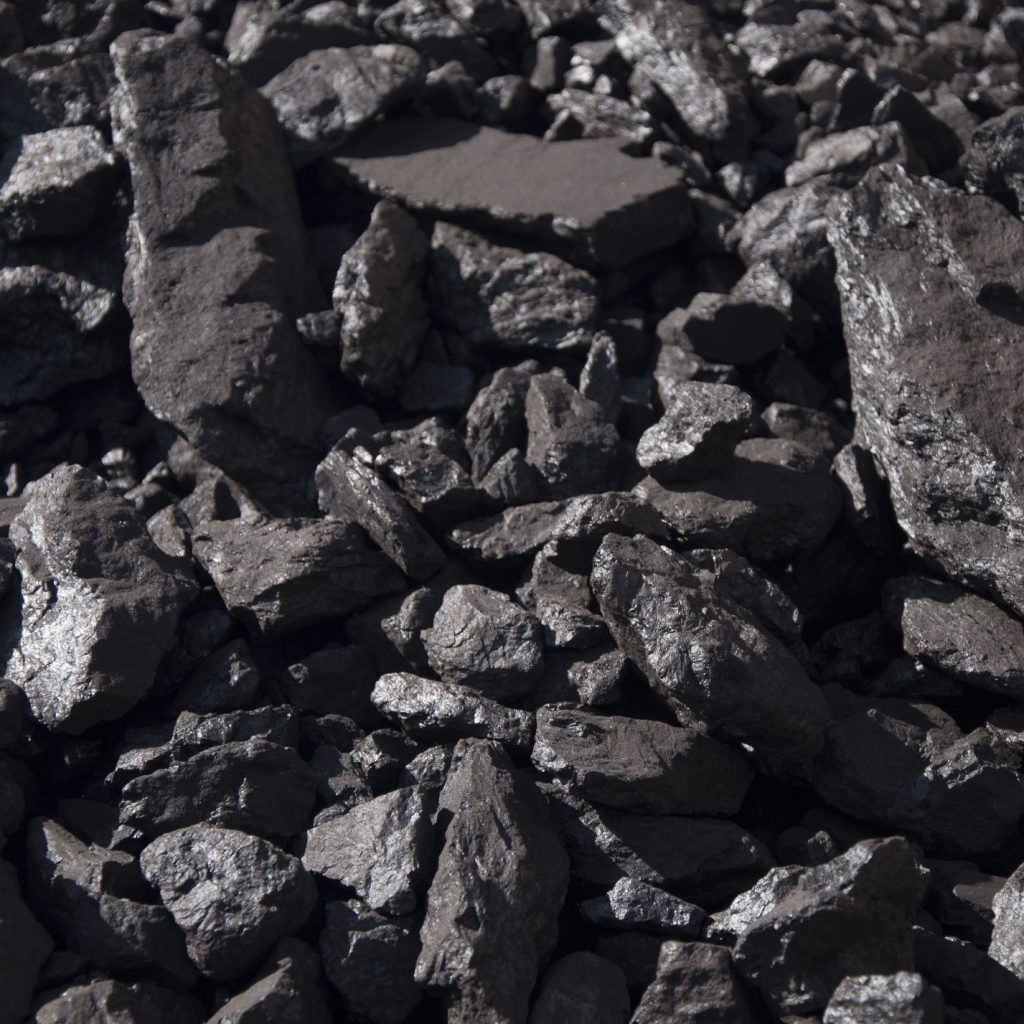Asphalt concrete, also known as bituminous pavement, is a composite substance that is made by mixing sand and bitumen. Or it is generally a mixture of granulated rock materials and an adhesive that is usually bitumen. Asphalt is made in various forms according to its application.
Types of asphalt used in asphalt paving
Bituminous pavement is divided into three categories according to the method of application and mixing: hot asphaltum, protective asphalt, and cold asphalt.
Substructure and proper bituminous pavement paving are done by using automatic asphalt paver devices and road construction machines and professional workers and, more importantly, proper supervision over its implementation, which is the responsibility of experienced experts.
Hot asphaltum
Hot asphalt is a type of bituminous pavement that is mixed with bitumen in hot form and is spread evenly and compacted on the surface. The most common type of asphaltum is hot asphalt or hot asphalt concrete. Stone materials usually make up more than 90% of the asphaltum mixture, so stone materials have a significant impact on the quality of the final asphaltum.
Hot asphaltum is a mixture of several different materials, including stone materials such as sand and the main material, bitumen, which is made in the Gilsonite factory based on the type of bitumen used at a temperature between 105 to 163 degrees Celsius and is sent to the area. This material is spread on the area in the form of a hot paste and is beaten and pressed with special asphalt paver devices. After getting cold, they become solid and very resistant.
This type of bituminous pavement is used for roads and airports and on many roofs. Among the types of hot asphalts, the best type in terms of strength and durability is asphalt concrete. Asphaltum concrete is obtained by mixing high quality and crushed stones and pure bitumen.
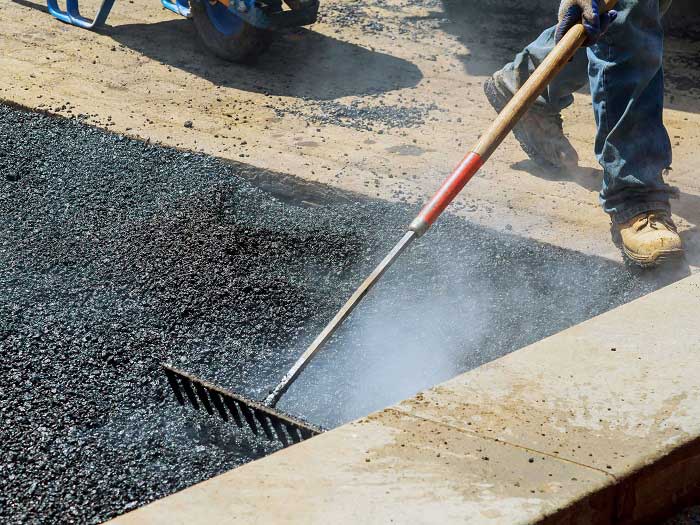
Asphalt concrete is used in all applications such as driveway blacktop and airport runways and is very durable against various weather conditions or traffic.
In the types of hot asphaltum mixtures, asphalt concrete is the strongest and the most durable type, which is obtained by mixing high quality and broken stone materials with regular and continuous granulation and pure bitumen, while implementing control and supervision on all stages of production. Asphalt concrete can be used in all different layers of shingles asphaltum and in any weather and traffic conditions, with no restrictions, while in similar conditions; on the other hand, the use of other types of hot asphaltum with discrete, open or regular granulation has many limitations.
Protective Asphalt
Protective asphaltum is the combination of crushed stone with bitumen , in which the size of the stones is much smaller and the purpose of making this mineral pitch is to protect the driveway asphalt. Using this type of asphalt on roofs for protection and as a coating to prevent damage to it or passages in which the pressure is less. The resistance of this type of asphalt is not high and it has a lot of asphaltites. Also, the thickness of the protective asphaltum is usually 2.5 cm.
The types of protective asphalts are as follows:
- Single layer protective mineral pitch
- Multiple Surface protective asphalt
- Pre-mixed coated macadam cold protective asphalt
- Prime coat type
- Tack Coat type
- Seal coats type
- Road Mix type
Spreading asphaltite on dirt, sand, asphalt, and concrete roads and immediately spreading grits on it, or spreading bitumen without grits or using prefabricated asphalt mixtures of the type of bitumen slurry or micro surfacing is called protective asphaltum. The thickness of this type of surface (micro surfing) is a maximum of 12 mm in 2 layers, which is not considered as a part of the road paving structure and does not have the functions of roadbeds. In protective asphalts, soluble bitumen, asphaltite or pure bitumen with low slipperiness are used.
Protective asphalts are used to make the road surface impermeable, increase its abrasion and slip resistance, as well as temporarily improve existing asphalt and concrete procedures. This type of procedure is very reasonable compared to hot asphalt due to its speed and ease of implementation and limited need for mineral pitch paver machines and equipment.
Cold mineral pitch
Cold asphalt (Cold Mix) is a mixture of rock materials and asphaltite or bitumen emulsion in which the materials are mixed at the normal temperature. In some types of cold asphalt, asphaltite may be heated as needed, but other materials will be mixed with asphaltite without heating.
Cold asphalt is prepared by mixing grits with soluble bitumen or bitumen at room temperature and spreading and compacting at the same temperature. Grits can be wet when mixed with bitumen, but with soluble bitumen, they must be dried at room temperature or under heat . Cold asphalt mixtures prepared with concentrated soluble asphaltites such as MC-3000 or SC-3000, practically like hot bituminous pavement, should be mixed with bitumen at 95 ° C or higher and spread and compacted within the same temperature range.
Cold asphalt can be transported and then spread over long distances or stored in a place and used later.
Cold asphalt can be used in all layers of pavement to pave a driveway, provided that all engineering criteria and traffic restrictions of the driveway are observed. This type of bitumen can be used in surface layers, bitumen base and base for light and medium traffic, and in bituminous base layer for heavy traffic
Asia Gilsonite is the largest exporter of Gilsonite, Natural bitumen, natural asphalt and Gilsonite powder from Iran, which has been operating since 2000 and currently owns more than 5 mines.
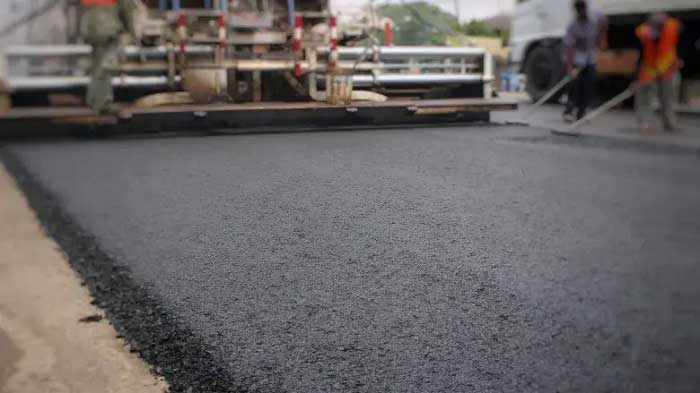
What are the effective factors in choosing the type of bitumen?
The type of road bitumen and the mineral pitch can be easily selected according to the volume of urban traffic on the street and the type of soil, but sometimes the choice of bitumen is so complicated that it must be done according to studies and important factors.
Paving a road is much more difficult than paving the way from the door to the parking lot of your car. But paving the roads is very different from this type of bituminous pavement because the desired pavement must be very resistant to traffic and heavy traffic and bad weather conditions.
Driveway pavements should be protected in such a way that they are not damaged by snow and frost in winter and are not affected by pollution and dirt in summer. If the pavement is like this, it is a new, reasonable, durable, and permanent pavement, and it is also easier to maintain.
To achieve this, there are three basic factors that are proper engineering, using high quality materials and the right implementation of pavement installation and finally correct supervision .
The Asphalt concrete
The bituminous concrete is a dense, black crust whose main part and ossification are generally composed of stone aggregates with dense granulation (with the least space) and its particles are bonded together by natural asphalt bitumen.
So the asphaltum and natural stone are mixed. The bituminous concrete is a homogeneous and solid body that bears its load, has relatively high shear strength, is stable against atmospheric factors and vehicle wheels, and does not require permanent repair. So it is the best choice for roads.
In other words, it is concrete in which bitumen is used instead of cement slurry, and stone powder is used to fill as many of its empty spaces as possible. The bituminous concrete is made and mixed in a hot method, usually in automatic machines, and then spread and pounded on the road surface. The pavement is made up to 4 or 5 cm in one layer and thicker than it in more than one layer.
The pavement road characteristics in different parts of the road
The layers usually consist of a cover and priming. The top layer, which is affected by atmospheric factors and the wheels of vehicles, must be made of premium mineral pitch. One of the main functions of the sub-layer, which is placed on the foundation of the road and may be made of one or more layers, is to transfer the load from the surface to the substructure of the pavement. The lining crust is usually made with coarser granulation and less bitumen and the top crust with finer granulation and more bitumen.
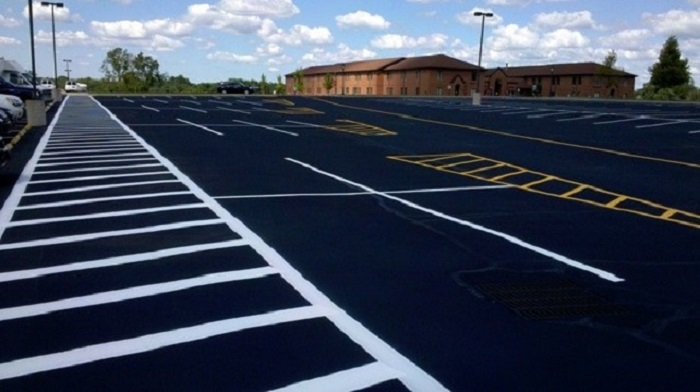
The asphalt road
The layers usually consist of a cover and priming. The top layer, which is affected by atmospheric factors and the wheels of vehicles, must be made of premium mineral pitch. One of the main functions of the sub-layer, which is placed on the foundation of the road and may be made of one or more layers, is to transfer the load from the surface to the substructure of the bitumen road. The lining crust is usually made with coarser granulation and less bitumen and the top crust with finer granulation and more bitumen.
When preparing the bitumen road, in addition to the type of consumption, it will have, its consumption will be considered. These include: whether the place is sunny or shady, whether it is open or inside the tunnel, the dryness, and humidity of the workplace, the temperature changes it has to endure, the construction of the road, etc.
The asphalt and natural stone
The bituminous and natural stone materials must have agglutinative granulation. In such a way that small particles fill the spaces between larger particles.
Granulation of stone materials and their space has a great impact on the quality of the resulting bituminous paving. After the stone materials are mixed, a sand value test should be performed on them. The result of this test must be at least 50. Artificial bitumen in hot bitumen is usually 60/70. Of course, other types of natural asphaltum bitumen may be used depending on the weather and the traffic.
To produce the bitumen in the factory or at the installation site, natural asphalt bitumen with different flow rates is used, which are known as quick bitumen and late bitumen. Bitumen, after mixing with liquid materials such as gasoline and oil or diesel, takes a smooth form so that it can be mixed with gravel and sand.
Asphalt a natural resource
The main property of asphalt is that it can be used as an adhesive. Bitumen a natural resource, softens when heated and is elastic. Due to its high adhesion properties, bitumen cement can be obtained at high temperatures and applied to desired surfaces.
One of the main applications of bitumen is surfacing roads and passages. In some countries, bitumen cement is used for roof insulation and canals and tanks. Places may also use sprayed natural bitumen powder for protection against weather and wear. Bitumen cement also finds use in industrial applications for industrial electrical insulation.
The minimum thickness of sand used in bituminous mixtures is 15 mm. This sand can be crushed or natural, washed sand.
The size of the sand used in bituminous mixtures can increase up to 40 mm. Using different sand dimensions and shapes can create voids, increasing the final volume compared to the raw materials.
Bituminous mixtures with internal voids are used for infrastructure and road protection, while higher-quality options are used for extended lifespans
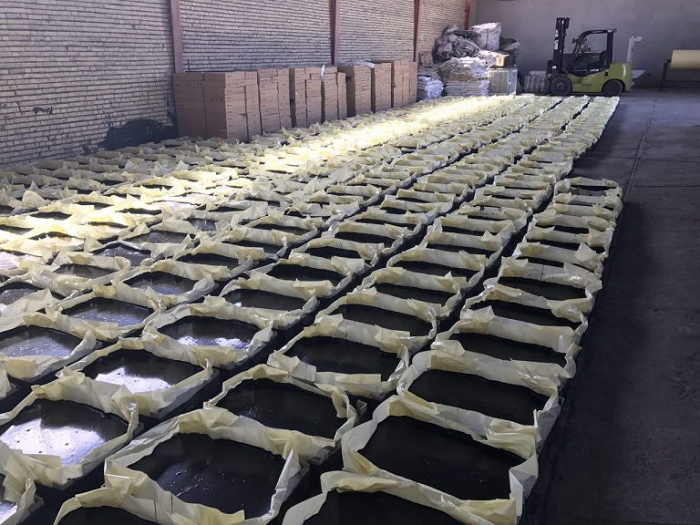
Blown asphalt
Blown asphalt is obtained by blowing hot air into the pure bitumen in the final stage of purification. The procedure is as follows: pure bitumen, which is in a liquid state and at a high temperature, is inserted into a special chamber and blown into it from the bottom of this chamber by using air pipes. This operation is usually performed at a temperature between 200 to 300 ° C, and the bitumen finds the desired properties.
The atoms in the bitumen molecules blend with the oxygen in the air to form water and heavier hydrocarbons. The resulting blown asphalt has a lower degree of penetration and a softer point than natural asphalt. Blown asphalt is less sensitive to temperature changes and therefore maintains its hardness better than the natural asphalt at higher temperatures.
Sulfonated asphalt
Sulfonic asphalt is used in the construction of asphalt roads. The reason for this is the increase in the price of petroleum products, the gradual reduction of hydrocarbon resources, and especially surplus sulfur. Replacing bitumen with sulfur increases the strength of the asphalt significantly. In the construction of road pavement, the quality and materials of stone can be improved by using sulfonic asphalt. The use of sulfonated asphalt to modify the properties of bitumen used in road paving has been expanding in recent decades. So that road construction operators by using modified bitumen in natural asphalt brea have significantly increased the life of roads and as a result, have increased their service life.
To prepare sulfonic asphalt, it is better to first combine bitumen and sulfur and then add them to the materials. Replacement of bitumen by sulfur is based on volume. If the amount of sulfur is less than 25% by weight, the properties of the desired texture are unsuitable because the sulfur particles in the mixture will not be enough, and if the amount is more than 60% by weight, the excess sulfur sticks to the scattered grains and makes the mixture undesirable. The dispersed phase of sulfur in bitumen is converted to bitumen in sulfur. Therefore, the appropriate ratio to achieve the desired texture includes 35 to 50 parts of sulfur in 50 to 65 parts of bitumen.
Natural asphalt chemical compositions
also known as bitumen composites, are made of a mixture of sand and bitumen and are used in the construction of roads, airport runways, and roofs of buildings. Natural bitumen composites include a combination of sand with a coating and adhesive material (bitumen) and filler between sand which is mixed by special machines with a certain amount of composition. Lake Pitch in Trinidad and Tobago is known as the most important natural bitumen supplier in the world. The country has abundant oil and gas resources, and the export of materials and oil products has boosted its economy. The Middle East is currently one of the world’s important natural bitumen suppliers and natural bitumen powder and lump suppliers in the world too. They can sometimes be found in the sand, such as the bituminous sands of northeastern Alberta, Canada, which is among the world’s largest natural bitumen deposits. There are lakes in the world whose contents contain other things than water. They are filled with bitumen to produce bituminous pavement by mixing the bitumen with the sand of the pit floor that created natural bitumen deposits.
Natural asphalt powder and lump supplier

Natural asphalt powder and lump supplier
The process of producing natural asphalt powder is not very complicated and in this way,
natural asphalt lumps are extracted from the mine and transferred to the natural asphalt manufacturers’ factory. Then, in the production line of the natural asphalt manufacturers’ factory, first, the natural asphalt lumps will be crushed using crushing machines. Then, natural bitumen powder is packaged.
Natural rock asphalt
bitumen is obtained from the natural penetration of bitumen into limestone rocks or sandstones. The natural rock bitumen is solid and is located under the surface layers of the earth and in vertical layers. This type of bitumen has been seen in France, Germany, and other parts of the world, which is used as a road surface material.
Natural rubber in asphalt concrete
bituminous concrete is used extensively, particularly as a bitumen additive in polymer bituminous mixtures. This incorporation of natural rubber into bitumen concrete enhances several key properties, including reducing stress on the surface, increasing the softening point, and improving flexibility under high traffic loads
Natural rubber modified asphalt concrete.
Natural rubber modified asphalt concrete.
Natural rubber modified bituminous concrete improves the properties of bitumen by increasing its quality and the life of the coating, and as a result, the maintenance and replication costs of the coating will be significantly reduced. One of these modifiers is the use of rubber powder.
Natural rubber modified bituminous concrete by increasing the hardness of bitumen, and the elasticity (recoverable deformation) in the operating temperature range, also reduces the temperature sensitivity of the pavement and improves the corrosion resistance and fatigue of bituminous concrete. Besides, lower maintenance costs, lower noise production, higher braking resistance, and better night vision are the advantages of rubber bitumen over conventional bituminous concrete. On the other hand, rheological results confirm the improvement of the properties by using natural rubber modified bituminous concrete in both cold and hot temperature ranges. Natural rubber bitumen binder increases the hardness and strength of asphalt bitumen, which increases the corrosion resistance of the asphalt mixture. Also, the use of natural rubber bitumen binder improves slip resistance, which increases safety and reduces traffic accidents
Natural asphalt business
Millions of cars travel on the roads and billions of dollars are spent every year to meet transportation needs as the main economic artery of the world today. The role of the road and consequently bitumen as a factor in accelerating the movement and reducing the cost of depreciation is undeniable. Europe, which is the inventor and manufacturer of cars, began a serious and extensive activity to spread the carpet called natural bitumen under its wheels and to reduce depreciation and increase car life.
In the natural bitumen business, the natural bitumen export increased mostly in 2015. In that year the rate of natural bitumen export was at its maximum rate. On the contract after 2015 the natural bitumen wholesale rate was decreasing, so the natural bitumen price had fluctuations. The natural bitumen price depends on its resistance, the exchange rate, and political conditions. Natural bitumen sellers around the world determine the natural bitumen cost based on many factors such as transportation costs of natural bitumen wholesale. Natural bitumen producers present their product with a specific price, but natural bitumen sellers determine different prices for natural bitumen cost.

